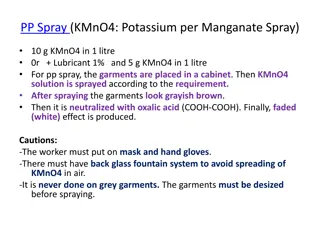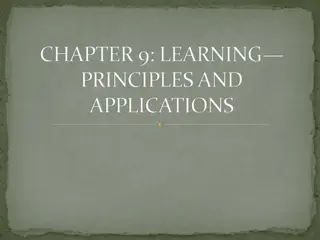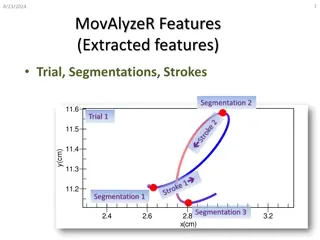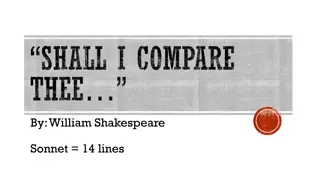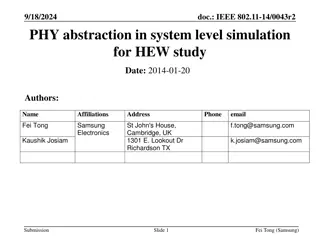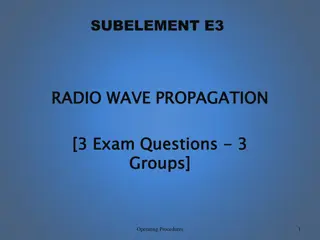
Appalachian Dialect Features - A Unique Linguistic Exploration
Discover the distinctive linguistic features of the Appalachian dialect, including A-prefixing, demonstrative "them," and Was Leveling. Dive into examples and insights into the roots and usage of these unique linguistic characteristics. Uncover the history and nuances of this dialect through real-life speech excerpts illustrating its distinctive features.
Download Presentation

Please find below an Image/Link to download the presentation.
The content on the website is provided AS IS for your information and personal use only. It may not be sold, licensed, or shared on other websites without obtaining consent from the author. If you encounter any issues during the download, it is possible that the publisher has removed the file from their server.
You are allowed to download the files provided on this website for personal or commercial use, subject to the condition that they are used lawfully. All files are the property of their respective owners.
The content on the website is provided AS IS for your information and personal use only. It may not be sold, licensed, or shared on other websites without obtaining consent from the author.
E N D
Presentation Transcript
Appalachian Dialect Features Appalachian Dialect Features
A-Prefixing Big ideas: This feature has roots that go all the way back to Old English. It s derived from the prepositions at/on: She is at working. This is a stereotypical Appalachian feature, but in reality, it s not that common in everyday speech.
Listen up. A-prefixing example #1 Yeah, well see, Tom s mother, when she, her and Dad was a-living they d have ah, well Pauline and them used to come out here every Sunday for dinner when Pauline and Howard was a-living. And the kids dcome out. And they d uh, well Dortha and all of them was home here then, you know, and stuff. And, uh, they d come out and have dinner with them. And then after the kids got a-married, well, we started having Thanksgiving and Christmas, you know. And uh, oh, ah, Easter, we d have, we ll have a cook, you know, get together and cook, like that. And I know people have made remarks about all of us a-being here. And up the road nobody, you know, come you know at the holidays. They said that, uh, well ah, Tom and Liz and them s got something a-going,you know, like that. A-prefixing example #2 Well, they have to have an eye on the whole bunch at the same time. But they usually, the way they done it in our class, she would teach one class at a time, mainly. And then while the other class was a-studying something else, she would teach another class. But you had different classes going on the whole day Long, I mean, you could be a-reading, "Baby Ray Has A Dog" in the primary class, and she might be teaching math over in the eighth grade at the other side of the room at the same time, and you was trying to read and remember what you was doing instead of what she was doing.
Demonstrative them. Big ideas: this, that, these, and those are all possible demonstratives in English Some dialects also include another choice: them them usually appears in places where you might expect those
Listen up. Demonstrative them example #1 And oh, there was hundreds of miles of red dog roads back in them days. Demonstrative them example #2 But all them young ladies though, they wanted to hold him.
Was Leveling Big ideas: Was Leveling means using the singular form of the verb be with a plural subject. The factors that influence who uses this feature and who does not, include: age, college experience, and social class. Older speakers tend to use this feature the most, and members of lower social classes use it more often, as well.
Listen up. Was Leveling example #1 Well, they hid for two solid years, and they didn t even know they was up there. Was Leveling example #2 I swim in it while we was filling it up.
Perfective done. Big Ideas: When Perfective done is expressed, it functions as a part of the verb phrase, usually immediately preceding the verb. Ex: We done washed the dishes. Used similarly by all native ethnic groups across the US South, done is also used in British English, though with a different structure and slightly different meaning. Despite this widespread usage, Perfective done is generally stigmatized outside of these speech communities, and it has become a sociolinguistic stereotype that is often employed in the use of racist or otherwise socially demeaning jokes.
Listen up. Perfective Done example #1: Maybe not? Okay. You done saw the money, didn t you? Perfective Done example #2: Well, they d just you know, some guys, you know back until the union got advantage of them, when they hear that you done joined the union, they d throw you out of the houses, see?
For-to Infinitives. Big Ideas: There appears to be four separate types of For-to infinitives in Appalachian speech: 1. An infinitive introduced by for + to where general usage has only to. Ex: Well, would you like for me to check your oil? 2. The infinitive is introduced by to, as well as a following pronoun. Ex: But we just felt we, we got to, the best thing for us to do was to move out of town. No parts of the phrase can be omitted without changing the meaning. Ex: Because the teacher was glad for us to come in playing music now and then. For and to are adjacent to one another. Ex: He s looking for to quit.
Listen up. For-to Infinitive example #1: And the miners had it really tough for to build their union. For-to Infinitive example #2: We went xxxx in nineteen thirteen, for to organize.



